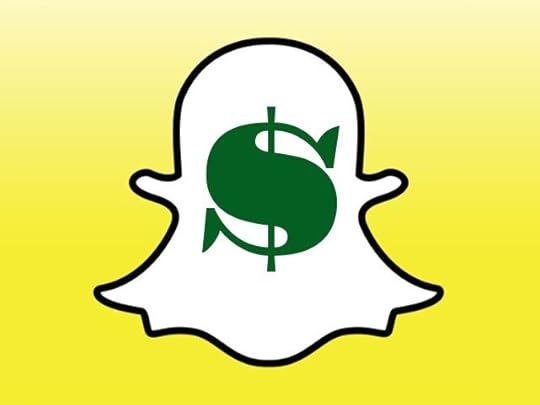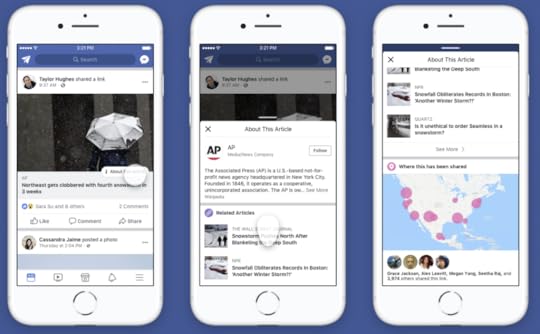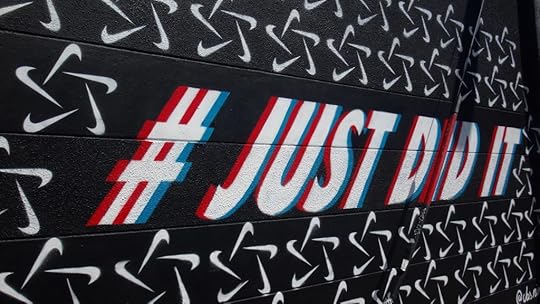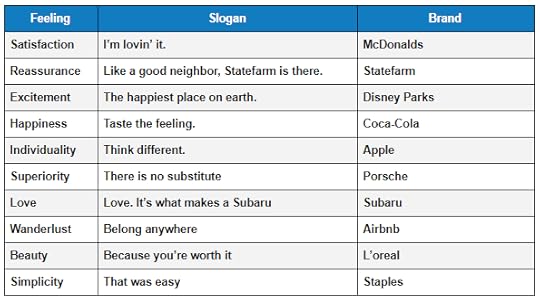Brian Meert's Blog, page 112
July 19, 2018
Code Suggests Snapchat to Partner with Amazon
 July 20, 2018
July 20, 2018Anna Hubbel
 Photo Courtesy of filecluster
Photo Courtesy of fileclusterA new rumor has surfaced about a possible collaboration between Snapchat and Amazon. An app researcher gave Tech Crunch the tip, uncovering code within Snapchat’s Android app for a visual product search feature. The project is currently dubbed Eagle, and, based on the discovered code, would direct users to Amazon’s product listings. The official name of the visual tool, according to the code, would be Camera Search.
Users would be able to scan an object or barcode through the Snapchat camera to see associated search results on Amazon. It could be a revolutionary step for Snapchat.
An Information Partnership
Project Eagle could make Snapchat a more useful app. It may draw older users in to the presently teen-dominated platform, as it would offer beneficial information about something of interest. And let’s not forget that everyone loves Amazon.
If the rumors are true, if Snap Inc. is partnering with Amazon, Snap Inc. may be able to look forward to better revenue outcomes. However, it is possible that Amazon would only serve as a destination for search results rather than an active partner. Neither company has been vocal about the rumors, so we’ll have to wait and see.
Tech Crunch speculates that project Eagle builds on Snapchat’s partnership with Shazam, which allows Snapchatters to identify and share songs playing nearby. Both serve as information tools, making it possible to learn new things about the world.
Additionally, Camera Search may serve as an expansion of Snapchat’s Context Cards. Context Cards provide basic information on local businesses, driving customers to physical brick-and-mortar stores or restaurants nearby. They too serve as an information tool for the average user. It appears that this information angle is the latest niche Snapchat is pursuing.
Snapchat wouldn’t be the first to implement a camera feature that identifies objects and provides users with related information. Pinterest Lens works similarly, as does the camera in the Google Pixel 2 phone. It makes sense that such a capability would interest Amazon as well. A Snapchat-Amazon collaboration may give those other guys a run for their money, as well as up the ante once again for Snapchat’s biggest rival, Instagram Stories.
For advertisers, Camera Search could be a huge marketing boost. The key will be to have products available on Amazon and a successful Amazon product page. It will be even more important to make products appear higher in Amazon’s search results.
Additionally, advertisers will need to have products located in physical places for Snapchatters to come across. The better and more successful the product, the more users will come across it through friends, family, and even strangers who’ve already purchased it. So whenever someone sees something of interest to them, they can scan it through Snapchat and find it on Amazon.
Social networks like Snapchat are getting smarter. And through products like Camera Search, they intend to bring users along for the ride.
The post Code Suggests Snapchat to Partner with Amazon appeared first on AdvertiseMint.
New Facebook Policy Removes Posts That Contribute to Violence
 July 19, 2018
July 19, 2018Anna Hubbel
 Facebook’s new feature provides additional information about articles.
Facebook’s new feature provides additional information about articles.Further extending its efforts to create only positive experiences on the platform, Facebook recently announced that it is now removing posts that provoke violence. In a statement shared by The Verge, Facebook says, “There are certain forms of misinformation that have contributed to physical harm, and we are making a policy change which will enable us to take that type of content down. We will begin implementing the policy during the coming months.”
With the new policy in place, Facebook, in partnership with threat intelligence agencies, will review all posts containing inaccuracies or misinformation made to cause violence or physical harm. Both text and images are included in this review—even if the text of a post doesn’t provoke violence, an attached image that does so is cause for removal.
Additionally, Facebook will determine whether a post should be removed based on press reports and its own public policy employees. Once a post is verifiably false, Facebook will remove the post. Removal includes any duplicate or shared versions of the post across the platform.
Facebook announced the new policy this week, but according to The Verge, it was put into effect last month.
The company is working harder than ever to make it a safe space for users. But outside factors aren’t making it easy. In September 2017, for instance, Facebook had to remove self-reported ad targeting after advertisers had used the tool to target “Jew-haters.” With every punch, however, Facebook follows with a strong, defensive swing. Hopefully, this latest swing will effectively prevent violence caused through the platform.
The post New Facebook Policy Removes Posts That Contribute to Violence appeared first on AdvertiseMint.
Amazon Job Ad Suggests Free-to-Air TV and Advertising Coming to Prime
 July 19, 2018
July 19, 2018Anna Hubbel
 Photo: Getty Images/Adrian Hancu
Photo: Getty Images/Adrian HancuIf you’re a subscriber to Amazon Prime, you’ve likely enjoyed the benefits that come with it, including Prime Video. There may be more in store for you and the massive audience base of Prime subscribers. Recently, a UK job ad by Amazon is looking for someone for free-to-air TV and advertising efforts in Europe, suggesting that the company wants to unite Amazon ads with its video stream offerings.
Free-to-air TV is TV channels accessed through digital TV tuners, satellites, or cable. The channels are supported by ads. As long as you’re a paying subscriber, you don’t have to pay anything to receive the channels.
According to Tech Crunch, the job ad went through various title alterations as the public suspected the implications of Amazon’s plans. It went from “Head of Free to Air TV & Advertising” to “Head of Prime Video Channels Free To Air TV & Advertising TV Partner Channels,” and then to “Head of Prime Video Partner Channels.” Each title contained the same job ID number, all referring to the same position.
The ad description, as reported by Tech Crunch, reads:
“Channels have launched in US, UK and Germany and this is a new and fast-growing area within Prime Video. As part of this expansion, we are seeking a senior leader to join the European Channels & Sports team, based in London. This individual will be responsible for widening the content range with the development of free and advertising-funded channels.”
Included in the description of job responsibilities is the development of Prime Video’s European strategy for free-to-air and advertising-funded channels, reports Tech Crunch. Presently, Amazon’s UK service does not offer free-to-air channels—this job would be focusing on a new area.
For advertisers, if free-to-air TV is coming to Amazon, this is huge news. Amazon Prime is already used at a massive scale. This offering would attract even more audiences, meaning excellent ad exposure for anyone who invests in Amazon-powered ads for the new TV service.
Amazon’s ad business, projected to make $9.5 billion in 2018, is an incredible opportunity for both the company and advertisers to make money. As video streaming becomes more and more popular, free-to-air TV may give Amazon a competitive edge over competing streaming services like Hulu and Netflix.
Keep your ear to the ground. Although it’s merely speculation at this point, it wouldn’t be a surprise if free-to-air TV is the future of Amazon Prime. If you’re already a subscriber, prepare yourself for more awesome benefits. If you’re not yet a subscriber but love TV, well, you may want to start considering the investment.
The post Amazon Job Ad Suggests Free-to-Air TV and Advertising Coming to Prime appeared first on AdvertiseMint.
July 18, 2018
Google Enables New Security Feature to Prevent Spectre Attacks
 July 18, 2018
July 18, 2018Anna Hubbel

Last week, the Google Security Blog announced a new security feature for Chrome 67 to better protect internet users from speculative execution side-channel attacks like Spectre. Spectre attacks try to invade memory code to retrieve data within that memory, particularly in web browsers. While major browsers have taken precautions to prevent Spectre attacks, Google says its new feature, called Site Isolation, makes data worth stealing inaccessible.
Chrome 67 has enabled Site Isolation on Windows, Mac, Linux, and Chrome OS. Previously, the feature was available for Chrome 63, but only as an optional, experimental enterprise policy. Now, the feature is enabled by default.
How It Works
Google says Site Isolation limits each renderer process to documents from a single site. This allows Chrome’s operating system to stop attacks both between process and between sites. It’s worth noting that Chrome defines “site” as only the scheme and registered domain. Google uses the example of https://google.co.uk (a site) and https://maps.google.co.uk (which remains in the same process).
While Chrome up to now did have a multi-process structure, such as between different tabs, Google says an attacker’s page could still share a process with that of another user’s page. Such a scenario would occur with pop-ups, because they share a process with the original page they came from. Spectre attacks could then read private data, like passwords, that came from other pop-ups or frames sharing the same process.
With Site Isolation, Chrome isolates processes so that attackers cannot share them when internet users switch between tabs or navigations, not even when a pop-up or new frame is opened, as the new feature now gives them their own process, separate from that of the original site. To accomplish this, Google says Site Isolation, using out-of-process iframes, splits a single page across multiple renderer processes.
Although Site Isolation isn’t one-hundred percent foolproof, it does limit the amount of data an attacker can get a hold of.
Google says it’s working on expanding Site Isolation coverage to Chrome for Android. Additionally, the wheels are in ongoing motion to prevent attacks beyond Spectre, which may come from fully compromised renderer processes. Last but not least, Google is also collaborating with other browser vendors to prevent Spectre attacks.
“Site Isolation is a significant change to Chrome’s behavior under the hood, but it generally shouldn’t cause visible changes for most users or web developers (beyond a few known issues),” Charlie Reis says in the Security Blog post. “It simply offers more protection between websites behind the scenes.”
Platforms and vendors like Google have, as of late, been taking more and more measures to protect users’ privacy. Whether these measures work in the long run, we’ll just have to wait and see.
The post Google Enables New Security Feature to Prevent Spectre Attacks appeared first on AdvertiseMint.
July 17, 2018
How to Make a Catchy Slogan in One Week or Less
 July 17, 2018
July 17, 2018Anna Hubbel
How to Make a Catchy Slogan in One Week or Less. #business #marketing #businesstips
Click To Tweet

It’s easy to envy the popular companies that have those simple but memorable slogans everyone recognizes. Creating a catchy slogan for your brand is one of your biggest challenges as a marketer. The slogan has to be easy to remember and understand, all while accurately and fully conveying the purpose and drive of your business.
Slogans are everywhere. If you need some inspiration, here are some popular and effective ones you’ve probably heard of:
“I’m Lovin’ It” – McDonald’s
“15 minutes could save you 15% or more on car insurance” – GEICO
“Taste the Rainbow” – Skittles
“He/She Went to Jared” – Jared (Jewelry)
“America Runs on Dunkin’” – Dunkin’ Donuts
This is a short list of many other famous slogans. Seems easy, right?
But when you sit down with your pen and paper, you struggle with writer’s block. You can’t think of a clever, memorable way to word your slogan.
Although it can be an extremely frustrating process, it doesn’t have to be. If you have a defined guideline to help you through it, you can create the catchiest slogan of your dreams in as little as one week. There are five simple steps to creating your dream slogan.
Step 1: Have a Slogan Team

It always helps to have a group of people with whom you share ideas. Although something may sound good in your head, you may discover otherwise after saying it out loud to an audience that can critique you objectively. While you, who worked hard on your slogan, feeling a bit attached to it, may be biased towards your creation, your team is not. It’s important to have a team who can critique, give suggestions, and steer you in the right direction.
Your team should include
A small number of senior staff members familiar with the company culture
A few C-suite executives familiar with business goals
Gifted and skilled copywriters
Marketing team members
However, you don’t want too many people on this team because there is such a thing as too many ideas, lengthening the process of finding one solid idea.
Step 2: Clearly Define What Makes Your Brand Different
What’s your brand’s purpose? What does it stand for? It’s important to communicate your brand’s essence and what it stands for on your slogan.
For the second step, each member of your slogan team participates. Each member writes what they believe your brand stands for on a whiteboard. At this point, nothing needs to be perfect because it is still the brainstorming stage.
After your team writes all of their ideas on the board, each member must vote on the idea that most accurately defines what your brand stands for. Write down the three definitions with the most votes.
Step 3: Determine the Emotion You Want to Evoke
A slogan really hits home if it evokes an emotion. Why? Because it’s more likely to stick with people after they’ve heard it.
With the three definitions from Step 2, each team member writes all the emotions they feel for each definition. After each member finishes, do another round of voting, but this time, vote on the emotions that most accurately fit the emotions customers must feel when they hear your slogan.
Capterra provides a useful example of slogans and the emotions they elicit.

Step 4: Workshop Slogan Ideas
This step is the hardest of them all. Take the outcomes from the two votes in the previous steps and work them into possible slogans. Your team should divide into smaller groups, each incorporating the ideas on what your brand stands for and the defined emotions you want to elicit into the slogans. No idea is wrong at this point. Both good and bad ideas should be presented.
Once each group has a list of possible slogans, each idea should be consolidated into one list. The list should then be passed around so each team member can vote for their favorite slogan. The top two slogans can move on to the last step.
Step 5: Test Your Slogan
A/B test your top two slogans, comparing the performance of each to see which delivers the best results. You can test them by sharing them with your entire company, with people on your email list, and participants of a paid survey. Next, present one slogan idea to one half of your target population and the other slogan to the second half. Whichever slogan performs best out of the two tests is the winner!
Depending on your testing method, the number of A/B tests you conduct and the length of each test will vary.
Copywriting Considerations

When writing a slogan, there are some copywriting factors you should keep in mind:
It shouldn’t be too long or too short. It needs to be both easy to remember and fully expressive.
It should be sustainable. If your slogan won’t be applicable one, five, or even 50 years from now, it’s not going to work.
It should be consistent. Once you’ve settled on a catchy slogan for your brand, you should incorporate it into all marketing and advertising copy going forward.
The most challenging part of creating the perfect slogan is knowing where to start. Now that you know where to start (and finish), you no longer envy those other guys. It’s your turn to stand in the limelight!
The post How to Make a Catchy Slogan in One Week or Less appeared first on AdvertiseMint.
July 16, 2018
Twitter Now Testing Promoted Trend Spotlight Ads
 July 16, 2018
July 16, 2018Anna Hubbel
Twitter Now Testing Promoted Trend Spotlight Ads. #twitter #twitterads #digitaladvertising
Click To Tweet
Without looking, what was the last Twitter ad you saw? Hard to remember, isn’t it? That’s because Twitter, as a predominantly news and trending topic platform, isn’t the first place that comes to mind when it comes to visual ads. Now, however, it appears that Twitter is changing that.
The platform is now testing Promoted Trend Spotlight ads, which come in the form of a big visual banner displayed with tweet text on top of either a GIF or static image background. When users click the banner, they are directed to a feed of tweets with the ad’s headline and a relevant tweet by the advertiser at the top. Promoted Trend Spotlight ads appear in Explore for users’ first two visits in a given day before resorting back to Twitter’s typical Trend’s feed.
With this new ad format, Twitter aims to make its platform more useful to brands. A Twitter spokesperson told Tech Crunch, “We are continuing to explore new ways to enhance our takeover offerings and give brands more high-impact opportunities to drive conversation and brand awareness on our platform.”
Apparently, it’s working. In a statement given to Tech Crunch, Anthy Price, Disney’s executive vice president for Media, said, “The Promoted Trend Spotlight on Twitter allowed us to prominently highlight Winnie the Pooh and celebrate the launch of ticket sales for Christopher Robin while four of the characters took over major Disney handles on the platform to engage with fans.”
Disney is the first to test Twitter’s new ad format.
Although Twitter is a leading platform that’s predominantly successful when it comes to post engagement, it hasn’t been a show-stopper when it comes to ads. Perhaps this new format is just what the doctor ordered for better monetization.
The post Twitter Now Testing Promoted Trend Spotlight Ads appeared first on AdvertiseMint.
How to Cultivate Customer Loyalty to Your Brand


It’s so exciting when you acquire a new customer. It opens the door to new possibilities, perhaps an ongoing relationship in which the customer returns to your brand, again and again. Loyal customers who consistently return are the path to success. But how can you make that happen?
Making customers loyal to your brand takes time and dedication, as all relationships typically do. While there are various ways to build that loyalty, there are seven primary ways to do it:
Provide low prices, sales, and benefits
Have a mobile-optimized online store
Be diverse and inclusive
Showcase intelligence in advertising
Hire influencers
Be ethical
Provide easy return policies
Let’s explore each of these ways in greater detail.
Provide Low Prices, Sales, and Benefits
Solid relationships are about give and take. To build that understanding and encourage customers to buy from your brand, you must first offer them an incentive. Low prices, sales or special offers, and benefits are great ways to make customers feel like they’re getting something out of the relationship.
In a study of US teen Internet users, findings revealed that low prices, sales, and discounts influenced shoppers’ buying decisions. Additionally, two-thirds of the study’s participants said a great price made them more loyal to certain brands, with exclusive benefits also a big factor.
Have a Mobile-Optimized Online Store
Gen Zs, the age demographic consisting of teens aged 13 to 17, are the largest and most influential generation in the United States. For this generation, mobile is an integral part of their every day routine and plays a significant role in their purchase decisions. According to Emarketer, 56 percent of teens use their mobile devices to shop online. Additionally, a February 2017 survey found that Gen Zs even use their smartphones to shop in-store. Optimize your online store for mobile and create a seamless experience for young consumers.
Be Diverse and Inclusive

Gen Zs have a very diverse makeup. By 2020, 50 percent of Gen Zs will be part of a minority race or ethnic group. To establish a relationship with this generation, your communication with them (i.e. advertisements) should feature diversity and inclusivity. For example, you can feature more people of different ethnicities, genders, and sexual orientations in your ads. When your brand shows diversity and inclusivity, Gen Zs will be more responsive and more loyal.
Showcase Intelligence in Advertising
Consumers today place more value on intelligence than beauty. Ads that feel superficial no longer make the cut. Sixty-five percent of young consumers would rather have a great mind than a great body. To make sure consumers aren’t scrolling passed your ad because it pushes glamour and beauty too much, use a clever and intelligent angle instead. Think glasses and books rather than sex and bikinis.
Hire Influencers

To establish brand loyalty you must establish trust. Consumers tend to trust influencers more than brands. If an influencer is showcasing your brand, consumers are more likely to buy it. Look for popular influencers with social media behaviors that would be relevant to your brand. You also want to look for influencers who are genuine, unique, and innovative. This will add to the value consumers will receive by being loyal to your brand.
Be Ethical
If a consumer feels like your brand violates their ethical standards, there is no foundation of trust, no brand loyalty. How can consumers expect to trust a brand that has no moral compass? Consumers admire brands that have ethical standards because those standards show commitment beyond making money. Be consistently ethical across all of your brand’s behaviors. Doing so will make your brand more admirable and trustworthy to consumers.
Provide Easy Return Policies
If a consumer is on the fence about making a purchase, a complicated return policy could be the ultimate dealbreaker. It could also prevent a consumer from shopping with your brand in the first place. According to Emarketer, more than half of US Internet users avoid shopping with stores that have strict return policies. Additionally, 37.9 percent of in-store shoppers said their most important concern regarding returns is getting a full refund, with no complicated store credit or exchange alternatives. Create a return policy that’s easy to understand and that puts customer convenience first.
Every relationship requires attention and reasons to commit. Show your customers that you’re committed to making them happy, using the ways discussed in this article, and you will be rewarded with loyalty in return.
The post How to Cultivate Customer Loyalty to Your Brand appeared first on AdvertiseMint.
July 13, 2018
How to Format Your Blog Post for SEO
 July 13, 2018
July 13, 2018Anna Hubbel
How to Format Your Blog Post for SEO
Click To Tweet

You have something to say, and you want to share it online. Awesome! That’s the best way to reach a large audience. But there’s a little something called search engine optimization, otherwise known as SEO, that is needed to boost your blog to the top of Google’s search feed. The better your SEO, the higher your blog will appear on the feed, and the higher your chances of attracting readers. But how does SEO work? The short answer is keywords.
Keywords are words you should use throughout your post that are relevant to the meat or essence of your blog. For example, if your blog is about Facebook advertising, you’d want to use the keyword “Facebook advertising” throughout your blog to improve SEO. Google’s system then reads those keywords and matches them with searches users conduct that contain the phrase “Facebook advertising.” In simpler terms, Google interprets how you prioritize certain keywords and uses that information to determine your credibility and expertise on the topic to deliver the search results most valuable to users. Here are the essential steps to take when writing a blog post to make sure it has excellent SEO.
Step 1: Think of SEO Keywords before You Write
As eager as you are to start typing, first brainstorm keywords you want to rank high for in Google Search. Do some research and find the keywords your audience uses on Google. Using the Facebook advertising example again, here are some example keywords you’d want a blog post to contain to rank high in search results:
Facebook advertising
Digital advertising
Social media advertising
Facebook ads
Facebook creative
Keep your list handy and decide which keywords are the most important. It helps to order them according to priority.
Step 2: Add High-Rank SEO Keywords to Your Blog Post Title

Once you have your list of keywords, determine which ones you specifically want to rank high for and then add it to the title of your blog post. Your title is the master heading of your blog post, so the keywords you add to it will be interpreted as most important in comparison to other words you use. For example, the title of this blog post contains three high-rank keywords:
Optimize
Blog post
SEO
Step 3: Add SEO Keywords to Headings
Blog post platforms such as WordPress offer different heading options: Heading 1, Heading 2, Heading 3, and so forth. You should incorporate headings into your blog post and include any keywords you want to rank high for in those headings. Keep in mind that Heading 1 will have more effect than Heading 2, Heading 2 will have more effect than Heading 3, and so forth.
For example, the first heading within this blog post contains the target keyword “SEO.” By including it in our heading, we are communicating to Google that we want to rank high for this particular keyword.
Step 4: Link the Web Page to Target SEO Keywords
If “Facebook advertising” is our target keyword, we should attach a link to it that directs readers to the web page we want to rank high for. If your post is about hiking gear, for example, and that is your target keyword, you should include a link to your hiking gear product page. This is just another way to communicate to Google that you’re an expert on your topic and have additional, valuable information to offer your readers.
Step 5: Mention SEO Keywords 1 to 5 Times in Your Blog Post

To prove to Google that your blog post is about the keywords you claim, in addition to including them in your title and headings, you should mention keywords one to five times in the body paragraphs of your blog post. If you go over five, you will inadvertently keyword stuff, which involves using specific keywords far too much. Google does not like keyword stuffing. But you also want to make sure Google is accurately interpreting the importance of your desired keywords, hence the 1 to 5 range is ideal.
Step 6: Use Your Blog Title as the Title for Your Images
Google doesn’t like images that are titled generically, like “image 1” or “pic 1.” Use your blog title as the title for your images. For example “how-to-advertise-well-1” is far better than “pic 1.” When titling each image, use the same structure while changing the number. For example, “how-to-advertise-well-1,” “how-to-advertise-well-2,” and so forth. Google reads image titles when considering SEO, so this is an important step.
Step 7: Write 1,200 Words

Last but not least, it helps to have a post length of approximately 1,200 words. This length offers more value to the reader and makes it easy to spread out keywords for your SEO. It also builds Google’s confidence in your blog post as containing expert information.
That being said, don’t just add fluff words to your post for the sake of length. It should be well-written and edited for clarity. It doesn’t have to be exactly 1,200 every single time, as some content requires fewer or more words to both fully and succinctly cover the main topic. But set 1,200 words as the ideal goal because this will give you more wiggle room in either direction and will produce a great quality post in the end. A high-quality post is a widely read post, which is ultimately a high-ranking post in Google Search results.
To summarize, you should do the following to optimize your blog post for SEO:
Think of SEO Keywords before You Write
Add High-Rank Keywords to Your Blog Post Title
Add Keywords to Headings
Link the Web Page to Target Keywords
Mention Keywords 1 to 5 Times in Your Blog Post
Use Your Blog Title as the Title for Your Images
Write 1,200 Words
Now that you have your SEO guide handy, you can do what your fingers have been aching to do and write an awesome blog post.
If you want to do more with your blog on social media, you can also learn how to repurpose your blogs on Facebook.
The post How to Format Your Blog Post for SEO appeared first on AdvertiseMint.
July 12, 2018
4 New Updates to Snapchat’s Ads Manager
 July 12, 2018
July 12, 2018Anna Hubbel
4 New Updates to Snapchat’s Ads Manager. #snapchat #socialmedia #digitaladvertising
Click To Tweet

Who would have thought that just one year later, Snapchat, a platform previously opposed to advertising, would have a library of ad products? Snapchat first introduced Ads Manager in June 2017, and it has since rolled out on a consistent basis a slew of ad offerings. For example, you can now measure customer interactions with your ads through the Snap Pixel. Additionally, you can now target audiences based on location and context, use Deep Links for app install targeting, create Story Ads to appear in Discover, and much more.
To add even more sugar to the shake, Snap recently announced new updates to Ads Manager that include a suite of new tools for performance-driven campaigns. Specifically, Snap made four Ads Manager announcements.
You Can Now Drive Website Conversions
New bidding options now give you the ability to drive action with more efficiency. You will be able to reach users likely to complete a desired action, such as sign-ups, subscriptions, or purchases. With this newly added capability of Snap Pixel, your campaigns will be more successful.
Everyone Can Use Snap Pixel
Previously, Snap Pixel was only available to a select group of advertisers for an eight-month testing period. Now, the tracking tool is available to everyone. You can begin tracking your audience’s on-site activity in relation to your Snapchat campaign to your heart’s content.
Easily Measure Return on Ad Spend
Until now, you could only see the number of conversions your campaign delivers when using Snap Pixel. Now, you’ll also be able to see the value of those conversions. Easily measure your campaign’s return on ad spend, with a deeper understanding of the value of new or existing customers.
Assess Investment with Conversion Lift Capabilities
Ads Manager now allows you to assess investment with capabilities like holdouts and incrementality measurement for app and web conversions. In other words, you have a more granular conceptualization of the conversions (e.g. app installs or purchases on your website) obtained through your Snapchat campaign. Having these capabilities in greater detail gives you a more accurate assessment of what you’re getting out of Snapchat.
As Snapchat continues to evolve and transform the way we look at advertising, these latest updates are certainly not the last. It’s astounding to think that once upon a time, the Snapchat brand was struggling to make ends meet and kept holding the word “advertise” at bay. In any case, we enthusiastically welcome the change of heart.
The post 4 New Updates to Snapchat’s Ads Manager appeared first on AdvertiseMint.
July 11, 2018
Upcoming Deadlines for Facebook App Review Submissions
 July 11, 2018
July 11, 2018Anna Hubbel

Deadlines for Facebook app review submissions are fast approaching. First, the deadline to re-request Facebook login permissions outside of email and default, as well as access to various API functionalities, is August 1, 2018. A bit further down the road, a deadline of February 1, 2019 is set for re-requesting access to Lead Ads Retrieval and Marketing APIs.
August 1, 2018 Deadline
By August 1, developers will need to request permissions to the following:
Facebook Login permissions outside of email and default (see the list)
Pages API
Groups API
Events API
Messenger API
Instagram API
Business Manager API
Developers can begin the app review process in their app’s dashboard.
Facebook says it’s reducing wait times in the review process, having Messenger bot reviews completed in three business days. Facebook Login, Pages API, and Groups API reviews take a little longer at an average of seven weeks. However, Facebook hopes to reduce that wait time.
Developers are encouraged to give Facebook clear, high-quality instructions and screencasts that make it easy to understand the experience. Doing so will ensure the submission isn’t rejected.
February 1, 2019 Deadline
For developers who use Facebook’s Marketing API or Lead Ads Retrieval API, Facebook must approve requests to use them, as well as grant any additional related permissions. Facebook offers blog posts with pertinent information about Marketing API, Lead Ads, and Retrieval API updates. Some permissions may also require Business verification and a contract.
In other news, Facebook announced a new permission for Live Video API called “publish_video.” This new permission will take the place of publish_actions, which Facebook has removed for new apps and plans to remove for existing apps come August 1.
Facebook offers additional information about the app review process and necessary permissions. Developers and any Facebook advertising company should stay informed about the app review process to learn about the latest updates Facebook has made to make the process more thorough.
The post Upcoming Deadlines for Facebook App Review Submissions appeared first on AdvertiseMint.



